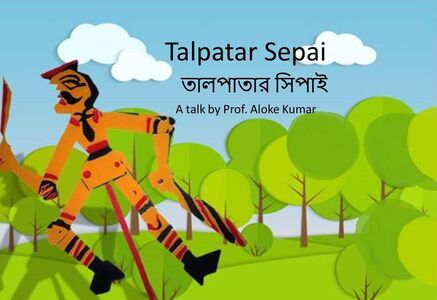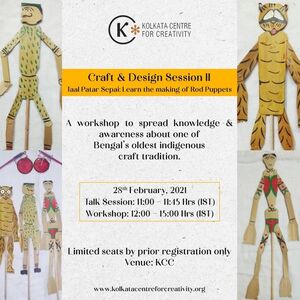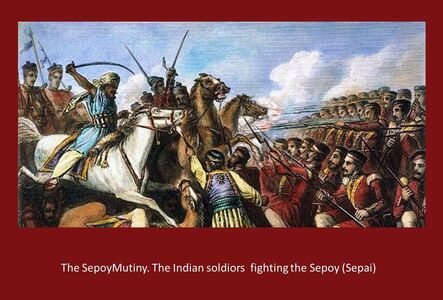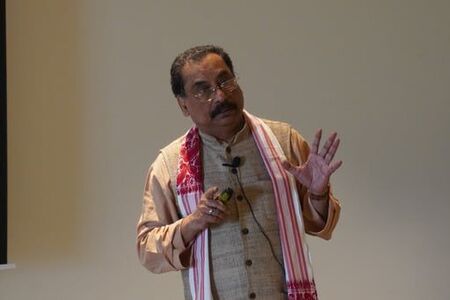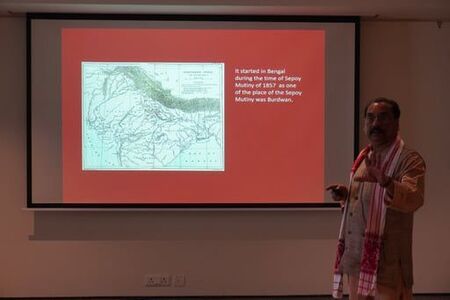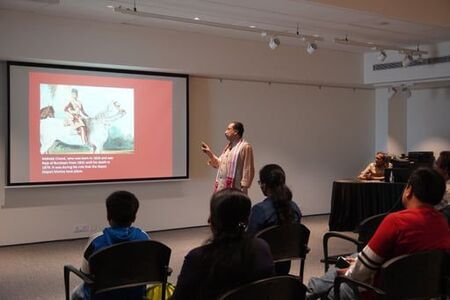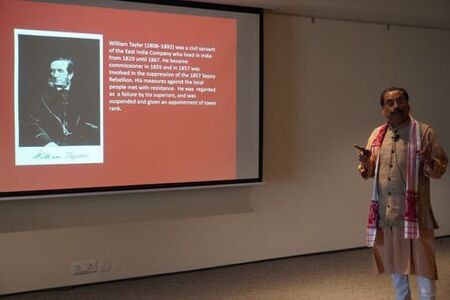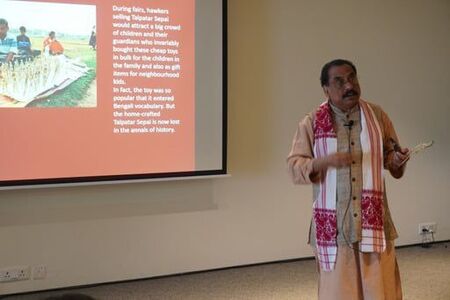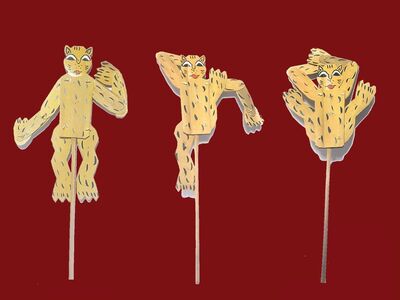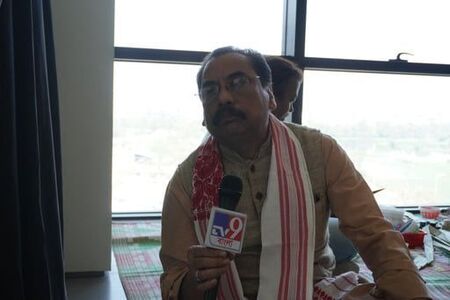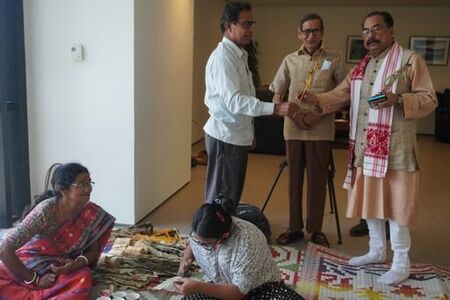Kolkata Centre for Creativity-KCC on 28th February 2021 organized a Workshop on the making of Bengal’s oldest form of rod puppet - famously known as the ‘Taal Patar Sepai’. The workshop conducted by Prof. Aloke Kumar, with presentation followed by a hands-on making, facilitates the traditional process of the Palm Leaf Sepoy.
The name associates itself with the use of biodegradable materials such as dried palm leaves, bamboo sticks and colours to create the puppet. The message of sustainability breathes itself into the act of re-creating Bengal’s oldest form of rod puppet.
~~~~~~~~~~~~~~~~~~
Remember the palm leaf sepoy that you played with in your childhood? Yes, in absence of electronic gadgets, children once played with indigenous toys, like the Taal Patar Sepai.
This particular craft has a historical significance. It started in Bengal during the time of Sepoy Mutiny of 1857 and one of the place of the Sepoy Mutiny was Burdwan. Mahtab Chand, who was born in 1820, was the Raja of Burdwan from 1832 until his death in 1879. It was during his rule that the Sepoy (Sepai) Mutiny took place.
William Tayler (1808–1892) was a civil servant of the East India Company who lived in India from 1829 until 1867. He became commissioner in 1855 and in 1857 was involved in the suppression of the 1857 Sepoy Rebellion. His measures against the local people met with resistance. He was regarded a failure by his superiors, and was suspended and given an appointment of lower rank.
Tal Patar Sepai takes its name from the British Sopoys who fought and lost the battle. It was a symbol of mockery of the British Sepoy, transformed into a puppet. Giving it the sobriquet of Tal Patar Sepai , symbolizing someone who is totally ineffective.
Taal Patar Sepai is a hypocorism in Bengali used to address a weak and rickety person who brags about his strength. But to us all it is a delicate toy, carved from dried palm (Taal) leaf in the form of a soldier/ policeman in uniform. A stick attached at the back of the toy with strings tied to its head, feet and hands enabled the holder to manoeuvre the toy’s movements and this was a great attraction for the kids once upon a time. A favourite toy both in rural as well as urban Bengal, it occupied a distinct place in the treasure-trove of toys and vied for attention from onlookers.
During fairs, hawkers selling Taal Patar Sepai and other toys would attract a big crowd of children and their guardians who invariably bought these cheap toys in bulk for the children in the family and also as gift items for neighbourhood kids. In fact, the toy was so popular that it entered Bengali vocabulary. But the home-crafted Taal-patar Sepai is now lost in the annals of history. Times have changed and so have tastes. These local toys were replaced by more attractive plastic and rubber toys and then by video games.
The art of making Taal-patar Sepai was practiced widely in rural Bengal. The entire process required a lot of patience and creativity. The palm leaves would be sun-dried and then measured and cut into small pieces in the shape of various human body parts. These parts would be joined with bits of thread. Finally, the physical features of each soldier would be drawn meticulously using sketch pens or paint brush. Although a particular pattern was followed to drawn the figures, but each toy had distinct features and facial expressions depending on the handiwork of the artisan who painted each Sepai. After the paint dried, a stick would be attached at the back of the toy and the strings would be tied to make it mobile.
It is Dolgobindo Dutta who, taking advantage of the history started making these puppets. He used this art form to create these simple puppets to entertain children. He made the British Soldier dance on our fingers. Today, his son Madan Mohan Dutta is continuing with making the craft.
They became so popular that in our modern day narrative that they are often depicted in our films. Today, they have taken many forms and colours. Today new characters have been created like: Saheb – Mem, Bagh Mama and others.
These days, there is an acute dearth of demand for this homogenous toy and toymakers associated with this trade are on the verge of extinction. But not all is lost yet. There are a couple of artisans in Birbhum district who still make a living by crafting Talpatar Sepai and selling these at Puja Pandals and other places.
All is NOT LOST as Children still enjoy this simple Craft and many are seen in villages playing with them.
Burdwan’s artist Madan Mohan Dutta along with his spouse taught the participants and showcased this art form.

